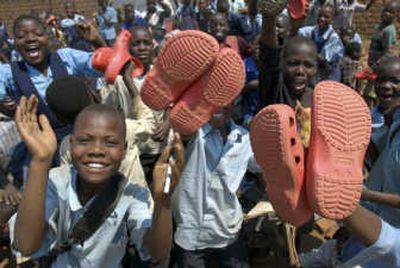Old Crocs get new life

NEW YORK – Old Crocs are getting a second chance – and giving many needy people around the world their first pair of shoes. The maker of the ubiquitous plastic shoes is launching its SolesUnited initiative to the public, asking for donations of worn-out shoes to be recycled and turned into new ones.
The company started donating shoes a little over a year ago when the brand’s materials scientists figured out a way to recycle the plastic. But the plastic almost exclusively came from scraps created during the manufacturing process.
SolesUnited marks the opening of the program to the public with many retailers around the country accepting old shoes. Crocs are made of a proprietary closed-cell resin that expands and contracts to mold to the wearer’s foot.
“It’s a great opportunity to give back,” Crocs CEO Ron Snyder said. “We’ve been very fortunate as a company.”
Fortunate is right: Crocs was a small business founded in 2002 in Niwot, Colo. Last year, it was one of the most widely traded Wall Street stocks, and it was named a top pick for this year by an analyst at PiperJaffray.
SolesUnited shoes have slight design tweaks to differentiate them from the traditional Crocs. Shoes recently sent to Malawi, for example, were without the back strap found on the original clog-style shoe.
Crocs’ distribution partner, the charitable Brother’s Brother Foundation in Pittsburgh, has sent shoes around the world. But, said Luke Hingson, president of the foundation, this new expansion will bring the program “to a whole other level.”
The shoes are important in these developing countries because it reduces people’s exposure to foot injury and infection and they simply can walk farther when their feet don’t hurt.
SolesUnited Crocs are embossed to note that they use recycled plastic and are intended for charitable purposes and can’t be sold.
A similarly styled shoe, however, will be introduced in the U.S. as a fundraising tool.